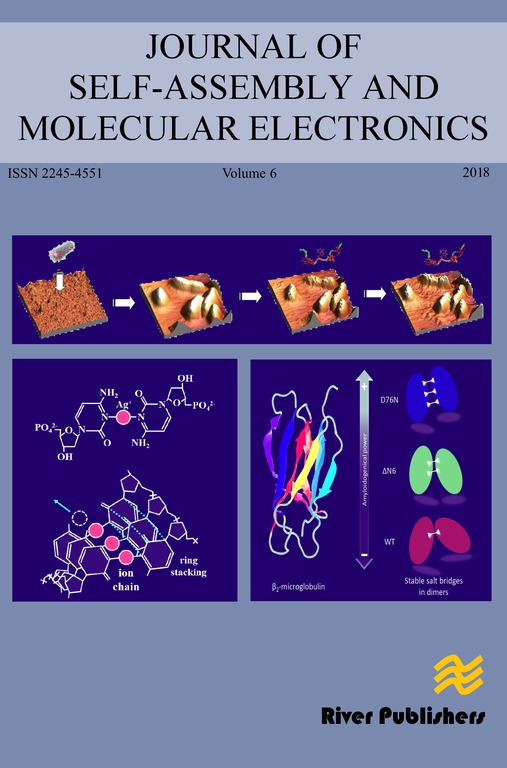Improved Anti-Fouling Performance of Sintered Alumina Membrane Filters Modified with Grafted-on PEG-Brush Polymer
DOI:
https://doi.org/10.13052/jsame2245-4551.2016.002Keywords:
Membrane filtration, fouling, surface modification, poly(ethylene glycol)Abstract
Fouling of membrane filters is the key performance limiting factor in mem-
brane filtration. Thus fouling and anti-fouling have received much attention
in recent years, covering topics from fouling mechanisms and characteristics
to anti-fouling surface modifications. This paper presents a method to achieve
controlled grafting of an anti-fouling poly(ethylene glycol) (PEG) brush poly-
mer layer onto a sintered alumina membrane filter surface without reduction
of the filter permeability. The obtained PEG layers were characterized using
a broad range of surface techniques including Fourier transformed infrared
spectroscopy, ellipsometry, atomic force microscopy, and contact angle mea-
surements. Dead-end filtration experiments with PEG-brush modified filters
showed improved fouling reversibility for the filtration of a BSA solution
and significantly slowed down the fouling rate during filtration of a lysozyme
solution. The cross-flow filtration of model lake-water demonstrated improved
foulant removal for the PEG modified filters during backflush cleaning and thereby increased the overall throughput during a filtration cycle as compared
to the bare membrane filters
Downloads
References
Naidu, G., Jeong, S., Vigneswaran, S., Hwang, T.-M., Choi, Y.-J., and
Kim, S.-H. 2016. A review on fouling of membrane distillation. Desalin.
Water Treat. 57: 1–25.
Ho, C.-C., and Zydney, A. L. 2006. Overview of fouling phenomena and
modeling approaches for membrane bioreactors. Separat. Sci. Technol.
: 1231–1251.
Chang, I.-S., Le Clech, P., Jefferson, B., and Judd S. 2002. Membrane
fouling in membrane bioreactors for wastewater treatment. J. Environ.
Eng. 128-11: 1018–1029.
Saxena,A., Tripathi, B. P., Kumar, M., and Shahi, V. K. 2009. Membrane-
based techniques for the separation and purification of proteins: an
overview. Adv. Colloid Interface Sci. 145: 1–22.
Yebra, D. M., Kiil, S., and Dam-Johansen, K. 2004. Antifouling technol-
ogy past, present and future steps towards efficient and environmentally
friendly antifouling coatings. Progr. Org. Coat. 50: 75–104.
Jhaveri, J. H., and Murthy, Z. V. P. 2016. A comprehensive review on
anti-fouling nanocomposite membranes for pressure driven membrane
separation processes. Desalination, 379: 137–154.
Yang, W., Cicek, N., and Ilg, J. 2006. State-of-the-art of membrane
bioreactors: Worldwide research and commercial applications in North
America. J. Membrane Sci. 270: 201–211.
Geise, G. M., Lee, H.-S., Miller, D. J., Freeman, B. D., McGrath, J. E.,
and Paul, D. R. 2010. Water purification by membranes: the role of
polymer science. J Polymer Sci B Polymer Phys. 48: 1685–1718.
Gironès i Nogué, M., Akbarsyah, I. J., Bolhuis-Versteeg, L. A. M.,
Lammertink, R. G. H., Wessling, M. 2006. Vibrating polymeric
microsieves: antifouling strategies for microfiltration. J. Membrane Sci.
: 323–333.
Wavhal, D. S., and Fisher, E. R. 2005. Modification of polysulfone
ultrafiltration membranes by CO2 plasma treatment. Desalination 172:
–205.
Ulbricht, M. 2006. Advanced functional polymer membranes. Polymer
: 2217–2262.
Shen, L., Xie, J., Tao, J., and Zhu, J. 2015. Anti-biofouling surface
with sub-20 nm heterogeneous nanopatterns. J. Mater. Chem. B, 3:
–1162.
Lih, E., Oh, S. H., Joung, Y. K., Lee, J. H., and Han, D. K. 2015. Polymers
for cell/tissue anti-adhesion. Progr. Polymer Sci. 44: 28–61.
D. A. Nielsen et al.
Berndt, E., Behnke, S., Dannehl, A., Gajda, A., Wingender, J., and
Ulbricht, M. 2010. Functional coatings for anti-biofouling applications
by surface segregation of block copolymer additives. Polymer, 51:
–5920.
Taniguchi, M., and Belfort, G. 2004. Low protein fouling synthetic mem-
branes by UV-assisted surface grafting modification: varying monomer
type. J. Membrane Sci. 231: 147–157.
Chapman, R. G., Ostuni, E., Takayama, S., Holmlin, R. E., Yan, L., and
Whitesides, G. M. 2000. Surveying for surfaces that resist the adsorption
of proteins. J. Am. Chem. Soc. 122: 8303–8304.
Ostuni, E., Chapman, R. G., Liang, M. N., Meluleni, G. Pier, G., Ingber,
D. E., and Whitesides, G. M. 2001. Self-assembled monolayers that resist
the adsorption of proteins and the adhesion of bacterial and mammalian
cells. Langmuir, 17: 6336–6343.
Kahn, M., and Huck, W. T. S. 2006. Hyperbranched polyglycidol on
Si/SiO2 surfaces via surface-initiated polymerization. Macromolecules
: 5088–5093.
Rahimi, M., Fojan, P., Gurevich, L., and Afshari, A. 2014. Effects of alu-
minium surface morphology and chemical modification on wettability.
Appl. Surface Sci. 296: 124–132.
Horcas, I., Ferñandez, R., Gómez-Rodriguez, J. M., Colchero, J.,
Gómez-Herrero, J., and Baro, A. M. 2007. WSXM: A software for
scanning probe microscopy and a tool for nanotechnology. Rev. Sci.
Instruments 78: 013705.
Ford, J. V., Sumpter, B. G., Noid, D. W., and Barnes, M. D. 2009. Refrac-
tive index dispersion functions of solid-phase polymers by multicolor
optical diffraction. Appl. Phys. Lett. 4: 2515–2517.
Hesse, M., Meier, H., and Zeeh, B. 1984. Spektroskopische methoden in
der organischen chemie, Number 3-13-576102-9. Georg Thieme Verlag,
Stuttgart.
Tadmor, R. 1984. Line energy and the relation between advancing,
receding, and Young contact angles. Langmuir, 20: 7659–7664.
Pfeil, W. 1998. Protein stability and folding, number 3-540-63717-6.
Springer, Berlin.
Recipe commonly used at Grundfos’ test facilities.



